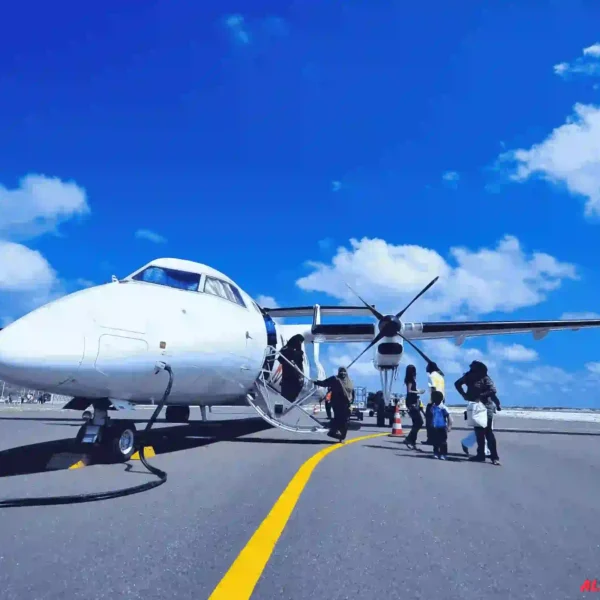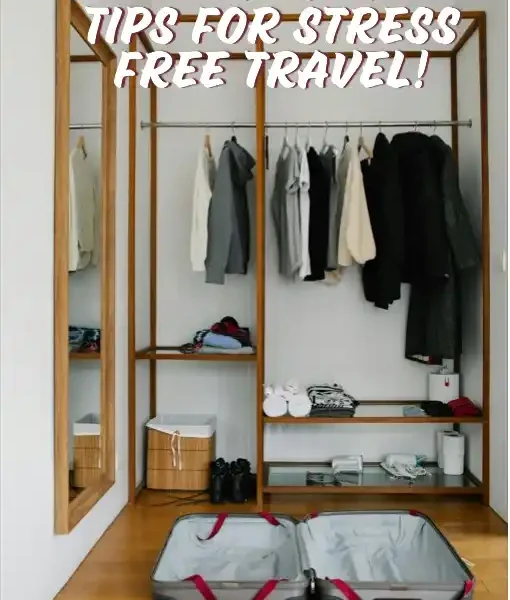Traveling alone as a woman is one of the most empowering experiences. It gives you freedom, confidence, and memories that last a lifetime. But let’s be real—safety is a big concern. The world isn’t always a safe place, and being prepared can make all the difference. So, stay safe and confident on your journey by following safety tips for solo female travelers.
Whether you’re a first-time solo traveler or a seasoned explorer, knowing how to stay safe as a solo female traveler is crucial. This guide will walk you through practical safety tips for women traveling alone, covering everything from choosing safe accommodations to staying alert in unfamiliar places.
By the end of this article, you’ll have the confidence to travel solo without fear. Ready to explore the world with peace of mind? Let’s dive in!
Tip #1: Research Your Destination Before You Go
Before packing your bags, take time to research your destination. Understanding the local culture, common scams, and safety concerns will help you avoid risky situations.
What to Look For?
✅ Safety Rankings: Some places are safer than others for solo female travelers. Websites like Numbeo and Safe Cities Index provide crime rates and safety insights.
✅ Local Laws & Customs: Some countries have strict dress codes or cultural norms that women should follow. Knowing these in advance will help you blend in and avoid trouble.
✅ Common Travel Scams: Every country has its own set of scams. Research what they are so you don’t become a target. (Example: Fake taxi drivers, overpriced tours, and friendly strangers asking for help).
✅ Best & Worst Areas to Stay: Some neighborhoods are safer for solo travelers than others. Look for areas with good lighting, busy streets, and reliable public transport.
Smart Research Tips
📌 Join Female Travel Groups: Facebook groups like Solo Female Traveler Network and Girls LOVE Travel offer real-time advice and safety tips from experienced travelers.
📌 Google Street View Your Accommodation: Before booking a hotel or Airbnb, use Google Maps to check how the surroundings look—safe or sketchy?
📌 Read Real Reviews: Instead of just looking at ratings, read detailed reviews on Booking.com or Hostelworld. Watch out for comments about security issues, strange guests, or poor lighting.
🚀 Pro Tip: Save emergency contacts before arriving, including the local police number, your country’s embassy, and trusted taxi services.
Tip #2: Choose Safe Accommodations
Where you stay can make or break your travel experience. As a solo female traveler, picking safe and secure accommodation should be a top priority. A budget deal isn’t worth it if it compromises your safety.
How to Choose the Right Place?
✅ Stay in Well-Reviewed Hotels or Hostels – Look for places with high ratings and positive reviews from other solo female travelers. Pay close attention to mentions of security measures, neighborhood safety, and staff behavior.
✅ Opt for Female-Only Dorms or Floors – Many hostels and hotels offer female-only dorms or even women-only floors, providing extra privacy and security.
✅ Check for 24/7 Reception & Security – A front desk that operates round the clock means there’s always someone available in case of an emergency. CCTV cameras, key card access, and secure lockers are added safety bonuses.
✅ Avoid Ground Floor Rooms – Rooms on the upper floors are generally safer from break-ins compared to ground-level rooms, especially in hotels with external doors.
Extra Security Measures
📌 Double-Lock Your Door: Always use both the deadbolt and chain lock in your room. If they don’t have one, carry a portable door lock or a doorstop alarm.
📌 Keep Your Location Private: Avoid sharing your accommodation details publicly on social media while you’re still there. You never know who’s watching.
📌 Use Trusted Booking Platforms: Websites like Booking.com, Airbnb, and Hostelworld offer verified reviews, which help in making safe choices.
🚀 Pro Tip: Before booking, Google Street View the location. Is the area well-lit? Are there busy streets nearby? Avoid places that look deserted or have isolated alleyways.
Tip #3: Stay Connected & Share Your Location
When traveling solo, staying connected is more than just updating your Instagram—it’s about ensuring someone always knows where you are. If anything goes wrong, having a trusted person tracking your location can be a lifesaver.
How to Stay Connected?
✅ Get a Local SIM or eSIM – A working phone means you can call for help, navigate safely, and stay in touch at all times. Buy a local SIM card upon arrival or use an eSIM for instant connectivity.
✅ Use Live Location Sharing – Apps like Google Maps, WhatsApp, and Find My Friends let you share your real-time location with trusted friends or family.
✅ Check-In Regularly – Set a routine to message or call someone daily, even if it’s just a simple “I reached my hotel safely” text.
✅ Save Emergency Contacts – Have local police numbers, embassy details, and hotel contacts saved in your phone and written on paper in case your phone dies.
Best Apps for Safety & Connectivity
📌 Google Maps Offline – Download maps before traveling so you can navigate even without internet.
📌 bSafe & Noonlight – These apps send emergency alerts to your trusted contacts with just one tap.
📌 TripWhistle Global SOS – Lists emergency numbers worldwide, so you always know who to call.
🚀 Pro Tip: If you’re using public WiFi, avoid logging into sensitive accounts (like banking apps). Use a VPN for extra security.
Tip #4: Trust Your Instincts & Be Aware of Your Surroundings
Your intuition is one of the strongest tools you have as a solo female traveler. If something feels off, trust your gut and remove yourself from the situation. Safety starts with awareness.
How to Stay Alert & Aware?
✅ Observe Before You Act – When arriving in a new place, take a moment to scan your surroundings. Are there suspicious people lingering? Does the area feel safe and well-lit?
✅ Avoid Wearing Headphones in Unfamiliar Areas – Listening to music while walking alone can block out important sounds, making you an easier target.
✅ Keep an Eye on Your Drinks & Belongings – Never leave your drink, phone, or bag unattended in public places like restaurants, bars, or buses.
✅ Walk with Confidence – Criminals often target those who seem lost or unsure. Walk with purpose, even if you’re figuring out directions.
When to Trust Your Gut?
📌 If a Stranger Makes You Uncomfortable – Distance yourself immediately. You don’t owe anyone an explanation.
📌 If a Place Feels Unsafe – Leave and find a busier, well-lit area or enter a shop/café until you feel secure.
📌 If a Situation Feels Off – Listen to your instincts, whether it’s a pushy taxi driver, a hostel with weird vibes, or a street that seems sketchy.
🚀 Pro Tip: If someone is following you, enter the nearest hotel, shop, or crowded space. Don’t head straight to your accommodation to avoid revealing your stay location.
Tip #5: Blend In & Avoid Drawing Unwanted Attention
Standing out as a tourist can make you a target for scammers, thieves, or unwanted attention. The key is to blend in with the local culture and avoid behaviors that scream “I’m not from here.”
How to Blend In Like a Local?
✅ Dress Modestly & Respect Local Norms – Research local dress codes before traveling. In some countries, revealing outfits can attract unwanted stares or even legal trouble.
✅ Avoid Flashy Accessories – Expensive jewelry, designer bags, or high-end gadgets can make you a target for pickpockets. Keep it simple and low-key.
✅ Walk with Purpose – Even if you’re lost, act like you know where you’re going. Stop to check your phone or map in a café or shop, rather than in the middle of the street.
✅ Limit Public Displays of Wealth – Avoid counting money openly, using expensive electronics in crowded areas, or carrying large amounts of cash.
Common Tourist Mistakes That Attract Attention
📌 Speaking Too Loudly in Public – Some cultures value quiet conversation. Being loud can make you stand out.
📌 Checking Maps or Phones Too Often – Looking confused or stopping frequently can signal that you’re new to the area and vulnerable.
📌 Wearing Backpacks on Both Shoulders in Crowded Areas – Keep your bag in front to avoid pickpocketing.
🚀 Pro Tip: Carry a crossbody bag with anti-theft features. It makes it harder for thieves to snatch and run.
Tip #6: Use Safe Transportation & Avoid Risky Rides
Getting from one place to another safely is just as important as where you stay. Unregulated taxis, shady rideshares, or unsafe public transport can put you at risk.
How to Travel Safely?
✅ Use Official Taxis or Trusted Ride Apps – Stick to registered taxis or ride-hailing services like Uber, Bolt, or Lyft, which provide driver details and GPS tracking. Avoid accepting rides from random strangers or unmarked cars.
✅ Sit in the Back Seat – This gives you more control over the situation and an easier way to exit if needed.
✅ Check License Plates & Driver Details – Before getting in, match the car’s license plate and driver’s name with what’s shown in the app. If they don’t match, cancel the ride immediately.
✅ Avoid Public Transport Late at Night – Trains, buses, or subways can be empty or poorly monitored at night, making you an easier target.
Extra Safety Measures While Traveling
📌 Share Your Ride Details – Most ride apps let you send trip details to a trusted friend or family member. Use this feature.
📌 Trust Your Gut – If a driver is acting suspiciously (taking a weird route, refusing to stop, or making you uncomfortable), speak up or ask to be dropped off in a public area immediately.
📌 Know Emergency Exits – When on buses or trains, sit near exit doors or the driver, and always be aware of emergency exits.
🚀 Pro Tip: If you ever feel unsafe in a ride, call someone and talk on the phone. Even pretend if needed—it signals to the driver that you’re being tracked.
Tip #7: Keep Your Valuables Secure & Carry Only What You Need!
Losing your passport, money, or phone while traveling solo can turn a great trip into a nightmare. Keeping your valuables safe is key to avoiding theft and unnecessary stress.
How to Secure Your Valuables?
✅ Use an Anti-Theft Bag – Choose a crossbody bag with RFID-blocking pockets and lockable zippers to prevent pickpocketing.
✅ Carry Only the Essentials – Leave extra credit cards, large cash amounts, and unnecessary documents in a hotel safe or hidden luggage pocket.
✅ Split Your Money – Keep cash in multiple places (e.g., some in your wallet, some in your bra pouch, and some in a hidden pocket). This way, you won’t lose everything at once.
✅ Make Digital Copies – Scan and save copies of your passport, visa, and important travel documents on your phone and email for backup.
Common Travel Theft Hotspots
📌 Public Transport – Thieves often operate in crowded buses, trains, and metro stations. Keep your bag in front and your hand over the zipper.
📌 Tourist Attractions – Pickpockets target distracted travelers at busy landmarks, markets, and festivals. Be extra mindful when taking photos.
📌 Cafés & Restaurants – Never hang your bag on the back of your chair or leave your phone on the table—it’s an easy snatch-and-run target.
🚀 Pro Tip: Hide an emergency $20 bill in a secret pocket. It can be a lifesaver if you ever lose your wallet.
Tip #8: Learn Basic Self-Defense & Carry Safety Tools!
While no one wants to think about worst-case scenarios, being prepared can make all the difference. Learning basic self-defense and carrying simple safety tools can give you confidence and an added layer of protection.
Simple Self-Defense Moves Every Woman Should Know
✅ The Palm Strike – If someone gets too close, strike their nose or chin with the bottom of your palm to create an opportunity to escape.
✅ The Knee Kick – A hard knee to the groin can disable an attacker, giving you time to run.
✅ The Ear Slap – Hitting both ears with an open palm can disorient an attacker.
✅ Break Free from a Wrist Grab – Pull your arm toward the weak spot of their grip (where the thumb meets the fingers) and yank away quickly.
Essential Safety Tools to Carry
✅ Personal Safety Alarm – A loud alarm can scare off threats and alert nearby people.
✅ Pepper Spray (Check local laws before carrying!) – A quick spray to the eyes and nose can temporarily disable an attacker.
✅ Door Stop Alarm – Place it under your hotel door for an extra layer of protection. If someone tries to enter, it sets off a loud alarm.
✅ Flashlight or Tactical Pen – A sturdy flashlight or pen can be used for self-defense while also being practical for daily use.
Bonus Safety Tips
📌 Take a Self-Defense Class Before Your Trip – Even basic training can boost your confidence and reaction time in dangerous situations.
📌 Keep Your Safety Tools Accessible – Your alarm, spray, or flashlight should be within easy reach in your bag or pocket.
📌 Practice Using Your Safety Tools – If you carry pepper spray, make sure you know how to use it properly under pressure.
🚀 Pro Tip: If you feel unsafe, act unpredictable—screaming, running in a zigzag pattern, or throwing objects can catch an attacker off guard.
Tip #9: Research Local Scams & Common Tourist Traps!
Scammers love targeting tourists, especially solo travelers. A little research on common scams in your destination can save you from losing money, getting tricked, or even ending up in a dangerous situation.
Most Common Travel Scams & How to Avoid Them
✅ The Taxi Overcharge – Drivers claim their meter is broken or take a longer route to charge extra.
🔹 Avoidance Tip: Always agree on a price beforehand or use trusted ride-hailing apps like Uber or Bolt.
✅ The Fake Police Scam – Someone posing as a police officer asks to check your passport or wallet, then takes your money.
🔹 Avoidance Tip: Never hand over valuables. Ask for an ID, and if unsure, insist on going to the nearest police station.
✅ The ‘Friendship Bracelet’ Trick – A stranger ties a bracelet on your wrist or hands you a ‘free gift’—then demands money.
🔹 Avoidance Tip: Keep your hands close to avoid unwanted ‘gifts’ and firmly say no.
✅ The ATM Helper – A ‘friendly local’ offers to help with the ATM, only to steal your card or PIN.
🔹 Avoidance Tip: Always cover your PIN, use ATMs inside banks, and never accept help from strangers.
✅ The ‘Closed Hotel’ or ‘Fake Guide’ Trick – A taxi driver tells you your hotel is closed and takes you to an expensive alternative where they get a commission.
🔹 Avoidance Tip: Call your hotel first before believing anyone. Only book tours through verified agencies.
How to Stay Scam-Proof?
📌 Read Up on Local Scams Before You Arrive – Each country has unique scams, so do a quick search like ‘common scams in [destination]’.
📌 Watch Your Belongings in Crowded Areas – Markets, train stations, and tourist spots are prime pickpocket zones.
📌 Trust Your Gut & Be Assertive – If something feels too good to be true, it probably is. Walk away quickly.
📌 Be Wary of Overly Friendly Strangers – Not all strangers have bad intentions, but if someone is too eager to ‘help’, be cautious.
🚀 Pro Tip: Carry a dummy wallet with small bills and expired cards—if you ever get forced to hand over money, you won’t lose much.
Tip #10: Know Emergency Contacts & Plan for Worst-Case Scenarios!
Even with all the right precautions, unexpected situations can still happen. Being prepared for emergencies ensures you stay calm and act fast if something goes wrong.
Must-Have Emergency Contacts
✅ Local Emergency Numbers – Every country has different hotlines for police, ambulance, and fire services. Save them in your phone.
✅ Your Country’s Embassy or Consulate – If you lose your passport or face legal trouble, they can help. Find the nearest embassy location before you travel.
✅ Hotel & Trusted Contacts – Keep the address and phone number of your accommodation handy. Also, have a local friend, guide, or tour contact saved.
✅ A Trusted Person Back Home – Share your itinerary and check in regularly with a family member or friend.
How to Prepare for Emergencies?
📌 Save Offline Copies – Keep screenshots of important documents, addresses, and contacts in your phone in case you lose internet access.
📌 Set Up Emergency Features on Your Phone – Many smartphones allow you to set emergency SOS contacts that can be triggered with a quick button press.
📌 Know Where the Nearest Hospital & Police Station Are – Upon arrival, check where you can get help in case of injury or trouble.
📌 Have a Backup Plan for Lost Items – If your phone, wallet, or passport is stolen, knowing how to replace them will save you from panic.
🚀 Pro Tip: Store a small amount of emergency cash in a hidden pocket or secret compartment in your bag—this can be a lifesaver if you lose your cards.
Final safety tips for solo female travelers
Travel Smart, Stay Safe & Enjoy Your Journey! Solo travel is an incredible adventure, offering freedom, self-discovery, and unforgettable experiences. While safety should always be a priority, it shouldn’t stop you from exploring the world with confidence.
By following these 10 essential safety tips for solo female travelers, you can significantly reduce risks and focus on enjoying your journey:
✅ Plan & research your destination
✅ Choose safe accommodations
✅ Stay connected & share your location
✅ Trust your instincts & be aware of your surroundings
✅ Blend in & avoid drawing unwanted attention
✅ Use safe transportation & avoid risky rides
✅ Keep your valuables secure & carry only what you need
✅ Learn basic self-defense & carry safety tools
✅ Research local scams & common tourist traps
✅ Know emergency contacts & plan for worst-case scenarios
🌍✨ Remember: Confidence, awareness, and preparation are your best travel companions. Solo female travel is not just possible—it’s empowering!
🚀 Ready to start your next adventure? Check out our Top Budget Travel Tips for solo travelers and plan your next safe, exciting trip!






